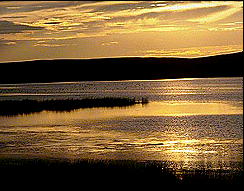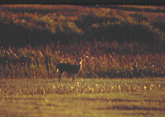|
|
||||
 |
 |
 |
||
 |
||||
|
|
Fens, are peat-forming wetlands that receive nutrients from sources other than precipitation: usually from upslope sources through drainage from surrounding mineral soils and from groundwater movement. Fens differ from bogs because they are less acidic and have higher nutrient levels. They are therefore able to support a much more diverse plant and animal community. Over time, peat may build up and separate the fen from its groundwater supply. When this happens, the fen receives fewer nutrients and may become a bog. | |||
|
|
Fens,
like bogs, provide important benefits in a watershed, including preventing
or reducing the risk of floods, improving water quality, and providing
habitat for unique plant and animal communities. Like most peatlands, fens
experienced a decline in acreage at a rate of about eight percent from
1950 to 1970, mostly from mining and draining for cropland, fuel, and fertilizer.
It is important to recognize that while mining and draining these ecosystems
provide resources for people, up to 10,000 years are required to form a
fen naturally.
|
|||
|
qualities |
Fen
and bogs are areas of soft, waterlogged land, usually containing large
amounts of organic acids and aldehydes in layers of Sphagnum and peat.
This environment often acts to
preserve the soft tissues of a cadaver even after the bones have dissolved
away; such things as skin, eyes, intestines, brains and hair are sometimes
so well preserved as to appear almost modern. First, the bog-watery environment
does not permit the growth of bacteria that will help decay flesh. Second,
the bog water contains certain acids that act to tan the skin (much the
same way as cowhide is tanned to produce leather). If the natural bacteria
action is prevented and the skin is tanned, the conditions are right for
producing a mummy. One such human bog-mummy is the Grauballe
man of Denmark. Similarly mummified
nematodes have been found in the peat
from Jumbo Valley fen in the Nebraska sand hills.
|
|||

